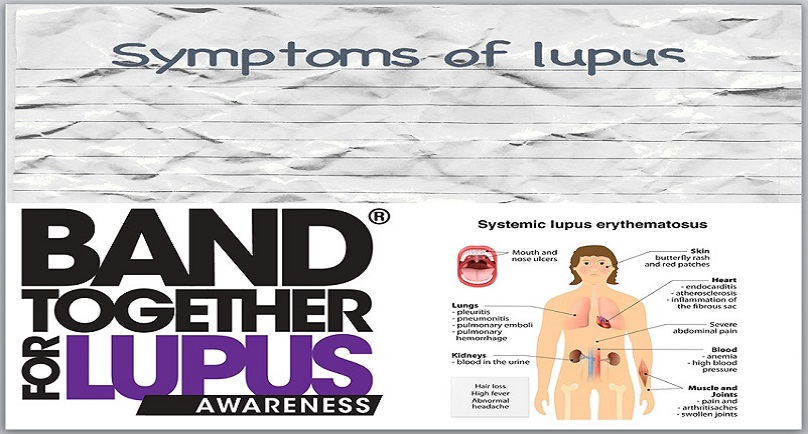By Daphne Rasehei – EMTV Online
Lupus is a chronic, autoimmune disease that can damage any part of the body (skin, joints, and/or organs inside the body). Chronic means that the signs and symptoms tend to last longer than six weeks and often for many years.
Diagnosis is often difficult. Many experts believe that the illness is more common than currently recognized, partially due to its wide range of symptoms and the difficulty in diagnosing it.
While 100 years ago the disease was generally fatal within five years of diagnosis, lupus is now manageable with the use of medication and lifestyle measures. People who have a diagnosis of lupus can now expect to live a normal life span.
10 Symptoms:
1. Butterfly Rash
Forty per cent of people diagnosed with lupus develop a red, bumpy rash that extends from the bridge of the nose and across the cheeks in a butterfly shaped pattern. While the face rash is the most common, a rash may appear anywhere on the body.
2. Sores in the Nose or Mouth
Approximately one out of every three people who are diagnosed with lupus develops ulcers in the mucosal tissues of the mouth or nose. These ulcerations can be very painful.
3. Changes in the Hair and Scalp
Many people who have lupus experience hair loss. It may be over the entire head or just in patches. The loss is usually transient and occurs during flare-ups of other symptoms. The scalp may also be dry and scaly.
4. Fatigue
Because lupus impacts the entire body, it creates physical and emotional stress. Fatigue is common as a result of the stress, which the disease places on the body and mind. Tiredness increases during flare-ups of other symptoms. Managin fatigue is an essential part of treatment, as fatigue exacerbates cycles of flare-ups.
5. Fever
Many individuals who have lupus run low-grade fevers of 99 to 100 degrees Fahrenheit. Fever may also be an indication of infection, which people who have lupus are prone to.
6. Frequent Infections
Individuals who have lupus are more prone to contract infections and illnesses compared with the rest of the population. This is due to an altered response of the immune system; drugs used to treat lupus also reduce the ability of the immune system to function well. Infections may be mild or serious. A health care provider should be consulted promptly at the first sign of infection.
7. Joint Problems
Pain, stiffness, and swelling may occur in the joints. Symptoms are usually widespread, affecting multiple joints throughout the body. Morning stiffness may occur years before any other symptoms of lupus are present. Pain may be present with or without other signs of inflammation. Ninety-five per cent of individuals who are diagnosed with lupus develop arthritic changes over the course of the disease.
8. Sensitivity of the Fingers and Toes
Fingers and toes may turn blue or white when exposed to cold temperatures, or during periods of stress. This is known as Raynaud’s phenomenon.
9. Dry Eyes
The eyes may be red, irritated, sensitive, or itchy. This is due to dry eyes, which are common among people who have lupus.
10. Anemia and Abnormal Blood Tests
The presence of abnormal blood test results helps health care professional’s diagnoses lupus. A reduced red blood cell count, or anemia, is common. Signs of anemia include paleness, fatigue, shortness of breath, and sensitivity to cold temperatures.
The white blood cell count may be low. This increases a person’s vulnerability to infection.


